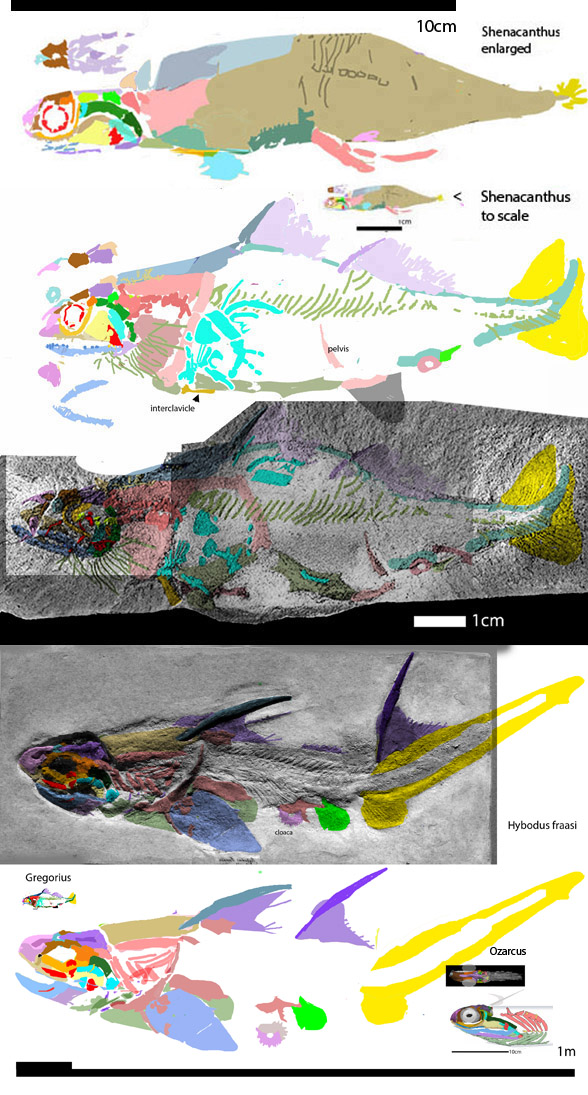From the Sternes et al 2024 ‘Discussion’ section:
“We found that selachians were benthic or benthopelagic in origin and expanded into the pelagic zone during the Early Cretaceous (by 122.6 mya) when SSTs [surface sea temperatures] were substantially higher than today. In alignment with the fossil record and previous studies, Lamniformes were the first to expand into the pelagic zone, where they experienced an increase in net diversification rates. Carcharhiniformes were the next group to expand into the pelagic zone, where they also experienced an increase in net diversification rates. These independent expansions occurred during the Cretaceous, and Lamniformes and Carcharhiniformes to this day contain the overwhelming majority of the extant pelagic selachians.”
Selachians = sharks and kin.
Lamniformes = thresher, basking, mackeral, megamouth, goblin, great white sharks
Carcharhiniformes = blue, lemon, bull, hammerhead sharks
The authors did not state that
sharks were already widely radiated by the Carboniferous (e.g. Gregorious and kin, Fig 1). The first sharks, like Early Silurian Shenacanthus (Fig 1), were tiny, about an inch in length. Much larger Hybodus is from the Early Jurassic where Wikipedia starts selachians.
Evidently these three fossil taxa were not included because this was a ‘molecular’ = genomic study, therefore restricted to 610 living sharks (Stein et al 2018) for data and inferences made thereafter to similar ancestors.
Early Jurassic Hybodus fraasi (Fig 1) is related to the pelatgic thresher shark in the LRT.

Figure 1. Tiny Early Silurian Shenacanthus compared to Carboniferous Gregorius, Hybodus fraasi and Ozarcus.
Phylogenetic data
“We downloaded a time calibrated molecular phylogeny of sharks from https://vertlife.org/sharktree/”. This study is from Stein et al 2018.
This is always risky. Use trait analysis instead. That way you can include fossils.
Th Sternes et al study focused on pelvic fin size and shape (= aspect ratio).
Better to build your cladogram
from every part of the shark and include more taxa than you think you need.
References
Sternes PC, Schmitz L and Higham TE 2024. The rise of pelagic sharks and adaptive evolution of pectoral fin morphology during the Cretaceous. Current Biology 34:1–9.
https://doi.org/10.1016/j.cub.2024.05.016
Stein RW et al (8 co-authors) 2018. Global priorities for conserving the evolutionary history of sharks, rays, and chimaeras. Ecolgy and Evolution, 2
https://www.nature.com/articles/s41559-017-0448-4
